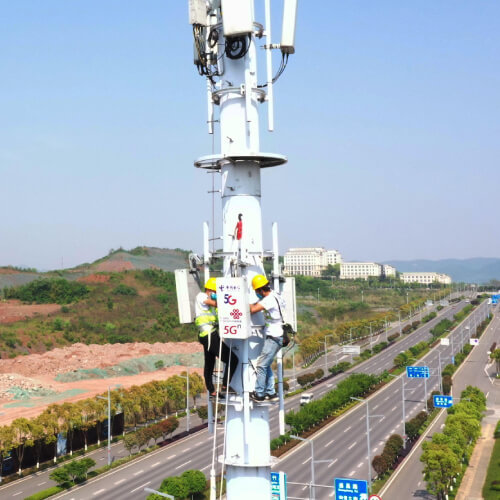
After two years of breakneck growth, the China 5G juggernaut is finally slowing down.
Since commercial launch in December 2019, Chinese operators have rolled out 1.5 million 5G basestations – more than three-fifths of the global total – and clocked up 355 million subscribers.
Now signs suggest that growth has peaked. One indicator is the decline in operator capex.
Figure 1:  One indicator suggesting growth has peaked is the decline in operator capex.
One indicator suggesting growth has peaked is the decline in operator capex.
(Source: Xinhua/Alamy Stock Photo)
China Telecom expects to cut 5G investment by 10.5% to 34 billion yuan (US$5.34 billion) this year, president Li Zhengmao told a results briefing last week. He said that 5G spending would be "stable and moderate" over the next two years.
China Mobile has forecasted a slide in 5G capex as well, despite being only mid-way through its 700MHz network rollout in partnership with China Broadcast Network (see China Mobile faces $15B bill for second 5G network).
The big telco has budgeted for 110 billion yuan spending on 5G networks in 2022, a 3.5% decline, although it still accounts for nearly three-fifths of total capex. Chairman Yang Jie said that 5G spending would start to drop significantly from next year.
At the same time, operators are ramping up investments in digital transformation and computing. China Mobile will spend 48 billion yuan on cloud, data centers and IT. China Telecom has allocated 28 billion yuan to what it calls industrial digitalization, a 54% increase (see China cranks up national data center, computing project).
Drop in 5G handset sales
The other indicator of flatter growth is the drop in 5G handset sales. Total domestic shipments have fallen for the past two months, according to the China Academy of Information and Communications Technology (CAICT) monthly reports.
In February, 11.6 million 5G phones shipped, down 24% year-on-year. January shipments totaled 26.3 million, off 3.5% from the previous year – a rare consecutive decline. Last year, vendors shipped 266.1 million 5G devices, up 63% over 2020.
Of course, as with basestations, these numbers are relative. China still shipped around 38 million 5G handsets in the first two months of the year.
But there's evidence that consumers are somewhat fatigued with 5G. China Telecom's 5G monthly net adds have been in gradual decline since October. China Mobile's numbers also dropped over the same period, although it had a bumper month in February, adding 24 million new package subs.
Want to know more? Sign up to get our dedicated newsletters direct to
your inbox
Much of the subscriber growth has been due to aggressive marketing by operators to upgrade 4G customers to the new network.
But it may be that they are getting close to the market limit. Like consumers elsewhere in the world, China mobile users are looking for a reason to upgrade to 5G in the absence of any compelling new apps or content.
Market research firm iiMedia found in a recent survey that among those who don't use 5G, 62% said that it was because they were quite satisfied with 4G. 45% said that 5G subscription prices were too costly, while 31% said handsets were too expensive.
The survey also found that the main reason for switching to 5G is pricing, made more challenging by the three operators offering almost identical 5G packages.
A cell phone store salesperson summed it up for the Guangzhou Daily: "The most important problem of current 5G mobile phones is the lack of iconic applications, which means that the functions of many consumer 5G phones is not fundamentally different from that of 4G phones."
Related posts:
— Robert Clark, contributing editor, special to Light Reading
Read more about:
AsiaAbout the Author(s)
You May Also Like











